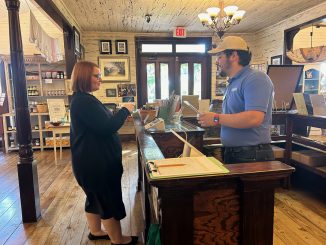
By LSU AgCenter Horticulturists Dan Gill, Kyle Huffstickler and Allen Owings
Landscapes around the state are in various stages of their spring awakening, but it is still February. With our unusually warm January and February, we’re seeing flower buds opening and foliage growth commencing ahead of schedule. Turfgrass is also included – some lawns in south Louisiana have not gone fully dormant this winter, and centipede grass is greening up ahead of schedule in the Baton Rouge area. Many golf courses have green Bermuda grass in their fairways.
Weather stations and meteorologists around the state reported that our average daily temperatures in January were considerably above normal. In addition, until this past weekend, we have had very few nights at or below freezing in February.
Chilling hour accumulations are below average statewide for this winter. Chilling hours accumulate when temperatures fall below 45 degrees. The most important months for chilling hours are November through February in Louisiana. Temperatures above 70 degrees during this time offset accumulated chilling hours.
Many fruit trees and some landscape plants require a certain number of chilling hours during the dormant season. So far this winter, we have only a couple hundred chilling hours in warmer locations in the state and about 550 hours in the colder portions of north Louisiana. This is a big difference from the 700-1,200 chilling hours recorded the past two winters.
Many late-winter-flowering trees – such as ornamental cherries, oriental magnolias, swamp red maples and more – are blooming 2-3 weeks ahead of their normal flowering dates in some parts of the state. In addition, azaleas in south Louisiana have been showing signs of bloom opening in January and February. Normal peak bloom for many of the Indica type azaleas in south Louisiana is March 20-25. We may see peak bloom around March 10 this year. Camellias have bloomed very well this winter and flower buds and open blooms have not been damaged by cold temperatures. Indian hawthorns and other spring-flowering shrubs are showing some signs of not being dormant and commencing spring growth. Plants that leaf out earlier than normal will be more susceptible to cold weather damage later this month and into March.
Cool-season bedding plants have performed well this winter. Pansies and violas are looking good and will last until mid- to late April in most landscapes. Flowering on some of the more traditional spring-flowering cool-season bedding plants, such as columbine, foxglove and dianthus, is ahead of schedule. Remove old flowers (deadhead) to encourage secondary and repeat bloom.
Once again, monitor the 10-day forecast prior to planting warm-season bedding plants that are not frost hardy. Continue planting frost-hardy bedding plants, such as petunias and snapdragons, through March.
Depending on where you are in Louisiana, lawns are in various stages of spring green-up. Be sure to not fertilize lawns too early. This is always very tempting. We may be able to fertilize a little earlier this spring, but check the 10-day forecast for frost and freeze possibilities prior to application.
During most years, the LSU AgCenter recommends the following times for first fertilizer or weed-and-feed applications on St. Augustine and centipede lawns: New Orleans – mid- to late March, Baton Rouge/Lake Charles/Lafayette – late March or early April, Alexandria – early April, and Monroe/Ruston/Shreveport – mid-April.
Ideally, it is best to apply fertilizer and herbicide products separately as an alternative to weed-and-feed applications.
This way proper timing of the materials will optimize performance of both products.
Many people have asked questions about the mild winter weather and what problems or issues this is causing in landscapes. It is not a major concern. Weather patterns are highly variable. Plant performance is highly variable.
Simply follow your usual practices and realize that many horticulture happenings in the landscape do not “follow the calendar” from year to year. Variation occurs in the landscape, and we need to accept this and increase our horticultural knowledge to know what to do with our plants when.




Be the first to comment